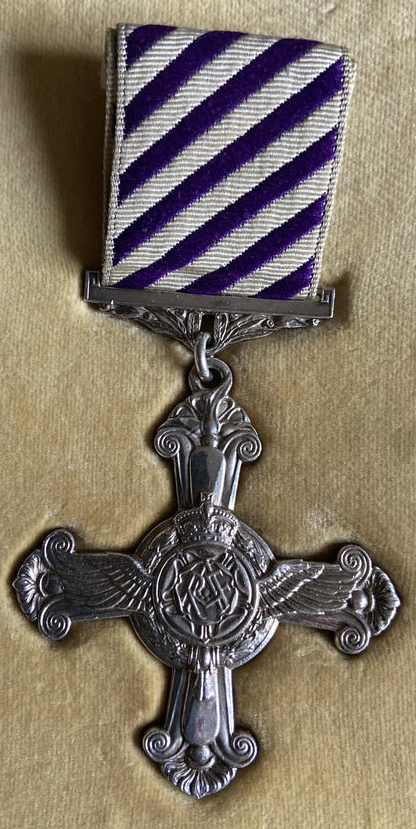By Kenneth FRERE, ex 296 Squadron
Wing Commander Geoffrey Harry ‘Buster’ BRIGGS DFC
(22 March 1918 – 13 April 2005)

Wartime members of RAF 38 Group will be sorry to learn that Wing Commander ‘Buster’(*) Briggs has filled in his last Form 700.
Geoffrey Harry Briggs was born in March 1918. After Sandhurst he was gazetted in 1938 as a Second Lieutenant in the Coldstream Guards and was a prominent member of the Household Brigade Flying Club. His regiment landed at Cherbourg in 1939 and then moved to near Louvain. When the Germans attacked in May 1940 the regiment made a series of fighting withdrawals until it was evacuated from La Panne.
Back in the UK ‘Buster’ applied for a transfer to flying duties and in 1941 found himself at Ringway training glider pilots. As he had done no formal RAF flying training he did not wear wings until AVM Barratt ordered him to do so. ‘Buster’ shared that privilege with Winston Churchill, though with better cause.
‘Buster’ joined the pioneering No 296 Squadron in 1942, flying Whitleys to tow gliders and drop parachutists. In 1943 he was transferred to No 295 Squadron at Holmsley South, where he converted to Halifaxes. He took part in Operation “Beggar”, ferrying gliders to Sale (in Morocco) and to Kairouan (in Tunisia). These flights were in preparation for Operation Husky, the air landings in Sicily.
Back in the UK ‘Buster’ was made a flight commander in the newly formed No 298 Squadron at Tarrant Rushton. From here he flew one of the Halifaxes which took part in the D-Day Operations “Tonga” and “Mallard”. He was also awarded a DFC. He made three trips to Arnhem during Operation “Market”, after which he was promoted to Wing Commander to take command of No 298 Squadron.
After ‘resting’ at The School of Air Support he returned to squadron duties as C.O. of No 190 Squadron, where he was involved in Operation “Doomsday”, taking 1st Airborne Division to liberate Norway in May 1945.
After the war ‘Buster’ returned to the Army and was invalided out in 1946 because of polio affecting an arm. He was an enthusiastic sailor and a farmer in East Sussex, where he was appointed a High Sheriff and a Deputy Lieutenant. He died on 13 April 2005, at the age of 87.
Kenneth FRERE
(*) Geoffrey Harry BRIGGS was known as ‘Buster’ from early childhood for his habit of falling into puddles and similar misadventures.
Distinguished Flying Cross awarded as per London Gazette dated 26 September 1944:
Acting Squadron Leader Geoffrey Harry BRIGGS (45270), R.AF., 298 Sqn.
This officer has completed many sorties. He is a most keen and efficient pilot, whose fearlessness and persistence have won him many successes. He is a fine leader and his example has greatly inspired the flight he commands.
Back to: In Memoriam

